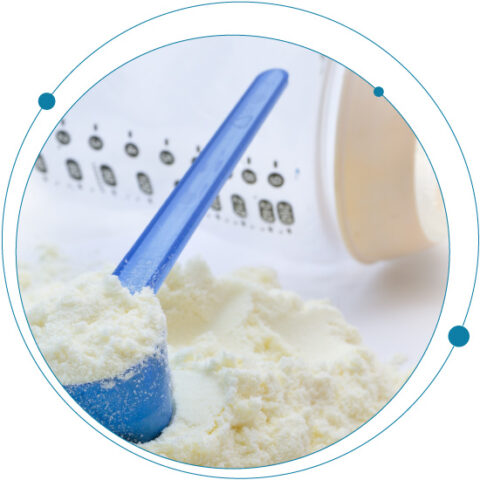 Read time: 4 minutes
Read time: 4 minutes
Now for part two of my interview with Dr. Wesley Zandberg. Here we spoke about milk oligosaccharides in formula vs human milk, how many there could be and what their future use looks like. Read on to find out what we discussed.
Formula vs human milk
As we have learnt from part one, Human Milk Oligosaccharides (HMOs) are evidently very important to newborn development, having prebiotic, anti-adhesive and immune effects to aid better health. When talking to Zandberg, he explained how neonatal health outcomes for formula fed babies vs human milk fed babies showed formula fed babies generally had poorer health, more hospital visits and more chronic diseases and infections. Therefore, over time, infant formula manufacturers have been adding these prebiotic sugars into their products.
So, what are the differences between formula and human milk?
There are two main differences between human milk and formula milk, the first one being maternal antibodies. Humans and mammals secrete antibodies which are passive in the milk to babies, providing them with a source of immunity which protects them from infections and diseases. With this missing from formula milk, babies might suffer illnesses. Secondly, the major ingredient missing in formulas until recently is these prebiotic milk oligosaccharides. As we know from part one, these have prebiotic, anti-adhesive and immune effects which provide baby with additional health benefits.
Replacing the missing prebiotic effect in formula milk
Formula milk manufacturers have been adding groups of polysaccharides (more than 20 simple sugars stitched together), known as galacto-oligosaccharides or fructo-oligosaccharides (a polymer of galactose or fructose) to replace the missing prebiotic effect HMOs have on the development of babies. Although these oligosaccharides work in a similar way, having a prebiotic effect and not being digestible directly by humans, they have a few big differences.
Firstly, the size. These galacto-oligosaccharides are very large molecules with a much higher degree of polymerization than the milk oligosaccharides found in mother’s milk.
Secondly, there is only one type of sugar in them which doesn’t chemically resemble the lining of the gut. Therefore, it is evident there are functions assigned to HMOs that we fail to replicate with the common industrial prebiotics used in the infant formula industry.
The complexity of the milk formula products and the potential number of unknowns
There are approximately 200 structurally different known HMOs. Not all have had chemical structures defined to them, but we have evidence using the current analytical tools for up to 200 unique things in human milk. There is between 50 and 60 oligosaccharides of these complex carbohydrates found in cow milk which depends on the breed and number of lactations the animal has had already.
In a recent study Zandberg carried out, 175 milk oligosaccharides were identified in cow milk. Although the structures will be different, this is almost as much in a cow than we find in humans. With these studies underway and after discovering interesting new milk oligosaccharides in cow milk, it could be argued unique entities will be discovered in humans to push that number above 200. With all this in mind, let’s see what the future might look like….
What could the future look like?
As functions of HMOs are difficult to replicate, manufacturers have been prompted to develop interesting things. There are now manufacturers of infant formulas that add actual HMOs to the milk, marketing to contain immune-boosting Human Milk Oligosaccharides, such as the 2’-fucosyllactose.
If we look to the future of HMOs in formula milk, it will be interesting to see if we can find ways to concentrate these from other milk sources such as waste dairy or excess milk from the cheese manufacturing process without the use of genetically modified enzymes. These would be very rich in carbohydrates, which could be a very valuable source of potential prebiotics for nutritional purposes.
There are people already who have turned to extremely rich sources of these carbohydrates to maintain their own health, which makes a lot of sense. We also find that fluid milk sales in North America are declining. However, other dairy such as yogurt containing products don’t seem to be affected. The future could find these products to be very rich sources of HMO-like molecules, as they are made up of the components from milk. In some instances, we could see the same chemical entities will be in a glass of kefir (yogurt-like product). We’ll have to wait and see!
References:
- NCBI – https://www.ncbi.nlm.nih.gov/pmc/articles/PMC7019891/
- Abbott – https://www.nutritionnews.abbott/pregnancy-childhood/infant-toddler/breakthroughs-in-infant-nutrition/
Related to RUO-MKT-11-13448-A






 Contact Support
Contact Support
0 Comments